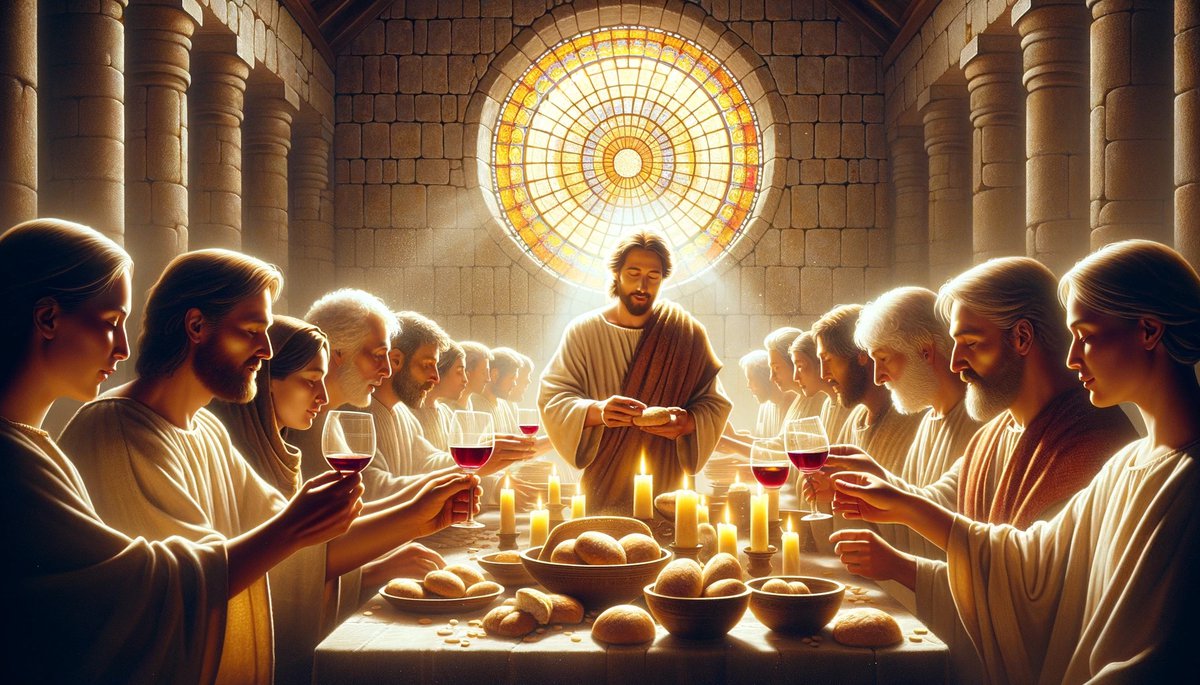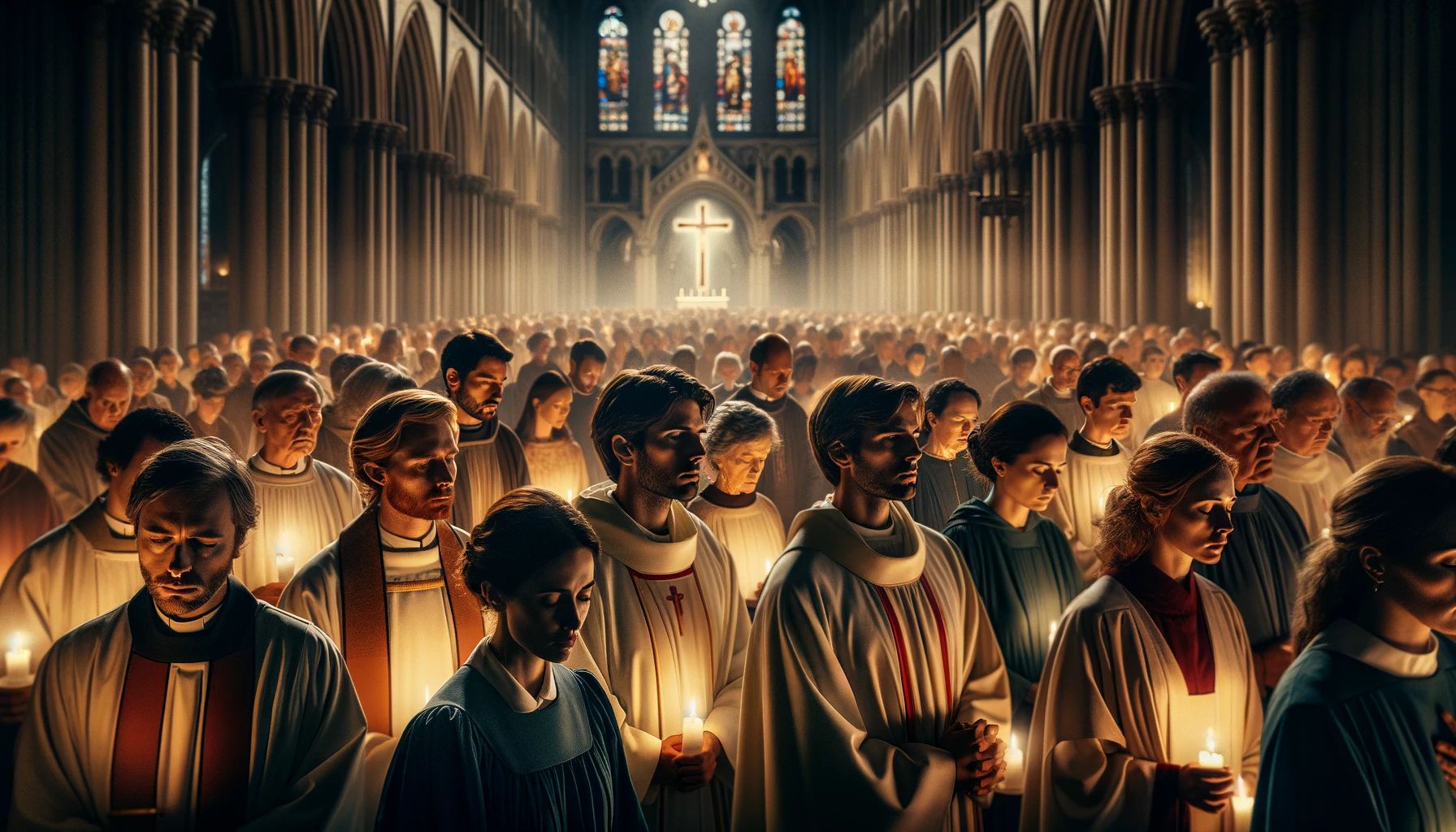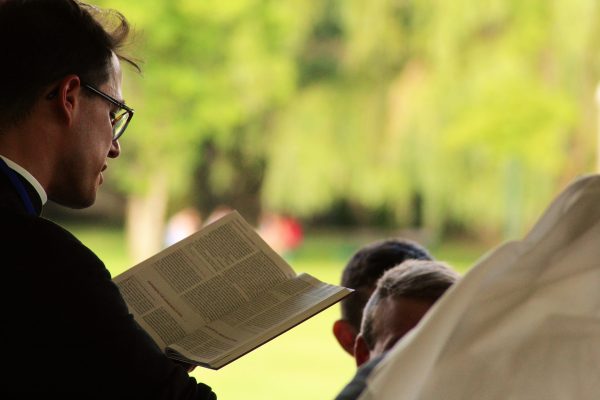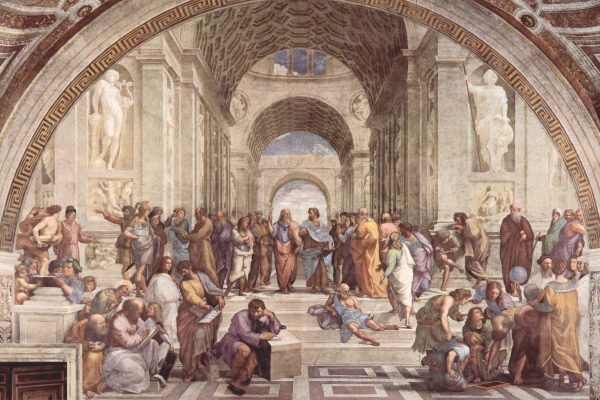Home>Arts and Culture>How Did The Cathedral Show The Power Held By The Catholic Church?


Arts and Culture
How Did The Cathedral Show The Power Held By The Catholic Church?
Published: February 16, 2024
Explore the influence of the Catholic Church through the cathedral's art and architecture. Uncover the church's power in the realm of arts and culture.
(Many of the links in this article redirect to a specific reviewed product. Your purchase of these products through affiliate links helps to generate commission for Christian.net, at no extra cost. Learn more)
Table of Contents
Introduction
Cathedrals stand as monumental testaments to the power and influence of the Catholic Church throughout history. These awe-inspiring structures, often towering over the surrounding landscape, served as physical manifestations of the Church's authority and spiritual significance. From the intricate designs of their facades to the soaring heights of their spires, cathedrals were not merely places of worship, but also symbols of the Church's dominance in medieval society.
The construction of cathedrals was a laborious and painstaking process, often spanning decades or even centuries. Skilled artisans and laborers dedicated their lives to the creation of these architectural marvels, pouring their expertise and creativity into every stone and stained glass window. The result was not just a place of worship, but a living, breathing work of art that embodied the aspirations and beliefs of an entire community.
In medieval society, cathedrals played a multifaceted role, serving as centers of religious devotion, education, and communal gathering. They were not only places of worship but also hubs of cultural and intellectual exchange, where the clergy wielded immense influence over the hearts and minds of the populace. The grandeur and opulence of cathedrals were a reflection of the Church's wealth and power, serving to impress upon the masses the might and authority of the institution.
The art and architecture of cathedrals were nothing short of breathtaking. From the intricate carvings adorning their doorways to the ethereal beauty of their stained glass windows, every aspect of these structures was meticulously crafted to inspire awe and reverence. The sheer scale and complexity of cathedral design reflected the Church's desire to create a physical representation of the divine, a place where mortals could glimpse the majesty of heaven itself.
As we delve into the history and significance of cathedrals, it becomes clear that these architectural wonders were not just symbols of religious devotion but also instruments of power and influence. Through their construction, design, and cultural impact, cathedrals served as potent reminders of the Catholic Church's dominion over the hearts and minds of medieval society.
The Construction of Cathedrals
The construction of cathedrals was a monumental undertaking that often spanned generations. These awe-inspiring structures, with their towering spires and intricate facades, required meticulous planning, skilled labor, and unwavering dedication. The process of building a cathedral was not merely a feat of engineering but a profound expression of faith and devotion.
Cathedrals were typically constructed using stone, a material chosen for its durability and grandeur. The sheer scale of these edifices meant that entire communities were involved in their creation, with stonemasons, carpenters, and laborers working tirelessly to bring the architect's vision to life. The construction of a cathedral was a laborious endeavor, often taking decades or even centuries to complete. The sheer magnitude of the task meant that many who embarked on the project would never live to see its fruition, passing the torch to future generations to carry on the sacred work.
The architectural design of cathedrals was a reflection of the era's technological and artistic prowess. The development of innovative building techniques, such as flying buttresses and ribbed vaults, allowed for the creation of soaring, open spaces and intricate, gravity-defying structures. Skilled craftsmen and artisans poured their expertise into every aspect of the cathedral, from the delicate tracery of the windows to the elaborate carvings adorning the doorways.
The construction of a cathedral was not just a physical endeavor but a spiritual and communal one as well. The entire process was steeped in religious symbolism and ritual, with the laying of the cornerstone and the consecration of the finished structure serving as profound moments of spiritual significance. The cathedral became a focal point for the community, drawing people together in a shared sense of purpose and devotion.
In essence, the construction of cathedrals was a testament to the unwavering faith and determination of the people who built them. It was a labor of love, a tangible expression of the profound spiritual beliefs that animated medieval society. The enduring legacy of these magnificent structures stands as a testament to the ingenuity, skill, and unwavering devotion of those who dedicated their lives to their construction.
The Role of Cathedrals in Medieval Society
Cathedrals held a multifaceted and influential role in medieval society, extending far beyond their function as places of worship. These grand edifices were central to the fabric of daily life, serving as hubs of religious, cultural, and communal activity.
At the heart of their role, cathedrals were primary centers of religious devotion. They were not only places for the faithful to gather and participate in religious ceremonies but also served as repositories of sacred relics and objects of veneration. The grandeur and opulence of cathedrals were designed to inspire awe and reverence, reinforcing the spiritual authority of the Church and its clergy. The rituals and ceremonies conducted within their hallowed walls were integral to the religious life of medieval society, shaping the beliefs and practices of the populace.
Furthermore, cathedrals played a crucial role in education and intellectual exchange. As centers of learning, they housed scriptoria where monks meticulously copied and preserved ancient texts, safeguarding knowledge and culture through the tumultuous medieval period. The cathedral schools provided education to the clergy and, in some cases, to the wider community, nurturing a cadre of scholars and thinkers who would shape the intellectual landscape of the time.
In addition to their religious and educational functions, cathedrals were vital hubs of communal activity. They served as gathering places for fairs, markets, and civic events, fostering a sense of community and shared identity. The cathedral square often buzzed with activity, becoming a focal point for social interaction and cultural exchange. The presence of a cathedral in a city or town was a source of pride and identity, symbolizing the spiritual and cultural vitality of the community.
The role of cathedrals in medieval society was not confined to the spiritual realm but extended to every facet of communal life. Their influence permeated the social, cultural, and intellectual fabric of the era, leaving an indelible mark on the collective consciousness of medieval society.
The Art and Architecture of Cathedrals
The art and architecture of cathedrals stand as a testament to the ingenuity, creativity, and unwavering devotion of the artisans and craftsmen who brought these magnificent structures to life. Every facet of a cathedral, from its soaring spires to its intricate stained glass windows, was meticulously designed to inspire awe and reverence, serving as a physical manifestation of the divine.
One of the most striking features of cathedral architecture is the use of soaring verticality to draw the eye toward the heavens. The towering spires and vaulted ceilings create a sense of upward movement, symbolizing the aspiration to transcend the earthly realm and connect with the divine. The use of light and space further enhances this ethereal quality, with the interiors bathed in a celestial glow that evokes a sense of spiritual transcendence.
The exterior facades of cathedrals are adorned with intricate carvings and sculptures, each telling a story of faith, redemption, and divine grace. These elaborate decorations served as visual narratives, conveying the teachings of the Church to a largely illiterate populace. The portals and doorways of cathedrals were often embellished with scenes from biblical stories, inviting worshippers to contemplate the sacred mysteries as they entered the sacred space.
Stained glass windows are perhaps the most iconic feature of cathedral art and architecture. These kaleidoscopic marvels transformed sunlight into a symphony of color, bathing the interiors in a radiant, otherworldly glow. The vibrant hues and intricate designs of the stained glass windows served as a visual representation of the divine, infusing the sacred space with a sense of wonder and enchantment.
The art and architecture of cathedrals were not merely ornamental but served a profound spiritual and symbolic purpose. Every aspect of their design was intended to elevate the soul and inspire a sense of awe and reverence. The intricate carvings, soaring spires, and luminous stained glass windows combined to create a transcendent experience, inviting worshippers to glimpse the divine and contemplate the mysteries of faith.
In essence, the art and architecture of cathedrals were a testament to the boundless creativity and spiritual aspiration of humanity, transcending the constraints of the earthly realm to create spaces that embodied the ineffable beauty and majesty of the divine.
The Influence of the Catholic Church through Cathedrals
The influence of the Catholic Church permeated every aspect of medieval society, and cathedrals stood as tangible manifestations of its power and authority. These imposing structures, with their grandeur and opulence, served as potent symbols of the Church's dominion over the hearts and minds of the populace.
At the heart of the Church's influence was the role of cathedrals as centers of religious devotion. These monumental edifices were not merely places of worship but also repositories of sacred relics and objects of veneration. The rituals and ceremonies conducted within their hallowed walls were integral to the religious life of medieval society, shaping the beliefs and practices of the populace. The clergy wielded immense influence over the spiritual lives of the people, using the awe-inspiring setting of the cathedral to underscore the Church's authority and divine mandate.
Furthermore, cathedrals served as instruments of education and intellectual exchange, further amplifying the Church's influence. The cathedral schools housed within these grand structures nurtured a cadre of scholars and thinkers who would shape the intellectual landscape of the time. The preservation and dissemination of knowledge through the scriptoria of cathedrals ensured that the Church held sway over the dissemination of ideas and information, further solidifying its position as a bastion of learning and culture.
The art and architecture of cathedrals also played a pivotal role in amplifying the Church's influence. The intricate carvings, soaring spires, and luminous stained glass windows served as visual narratives, conveying the teachings of the Church to a largely illiterate populace. The grandeur and opulence of cathedral design were intended to inspire awe and reverence, impressing upon the masses the might and authority of the institution.
In essence, cathedrals were not just architectural marvels but instruments through which the Catholic Church exerted its influence over medieval society. They were physical embodiments of the Church's spiritual, intellectual, and cultural dominance, serving as potent reminders of its power and authority. The enduring legacy of cathedrals stands as a testament to the indelible mark left by the Catholic Church on the collective consciousness of medieval society.
Conclusion
In conclusion, the cathedrals of the medieval era were not merely architectural marvels but profound expressions of the power and influence wielded by the Catholic Church. These monumental structures, with their soaring spires, intricate carvings, and luminous stained glass windows, served as potent symbols of the Church's dominion over the hearts and minds of medieval society.
The construction of cathedrals was a testament to the unwavering faith and determination of the people who built them. It was a labor of love, a tangible expression of the profound spiritual beliefs that animated medieval society. The enduring legacy of these magnificent structures stands as a testament to the ingenuity, skill, and unwavering devotion of those who dedicated their lives to their construction.
Cathedrals held a multifaceted and influential role in medieval society, extending far beyond their function as places of worship. They were central to the fabric of daily life, serving as hubs of religious, cultural, and communal activity. Their influence permeated the social, cultural, and intellectual fabric of the era, leaving an indelible mark on the collective consciousness of medieval society.
The art and architecture of cathedrals were not merely ornamental but served a profound spiritual and symbolic purpose. Every aspect of their design was intended to elevate the soul and inspire a sense of awe and reverence. The intricate carvings, soaring spires, and luminous stained glass windows combined to create a transcendent experience, inviting worshippers to glimpse the divine and contemplate the mysteries of faith.
Furthermore, cathedrals were not just architectural marvels but instruments through which the Catholic Church exerted its influence over medieval society. They were physical embodiments of the Church's spiritual, intellectual, and cultural dominance, serving as potent reminders of its power and authority.
In essence, the cathedrals of the medieval era stand as enduring testaments to the profound impact of the Catholic Church on the hearts, minds, and culture of medieval society. Their legacy continues to inspire awe and reverence, inviting us to contemplate the enduring power of faith, creativity, and human aspiration.













